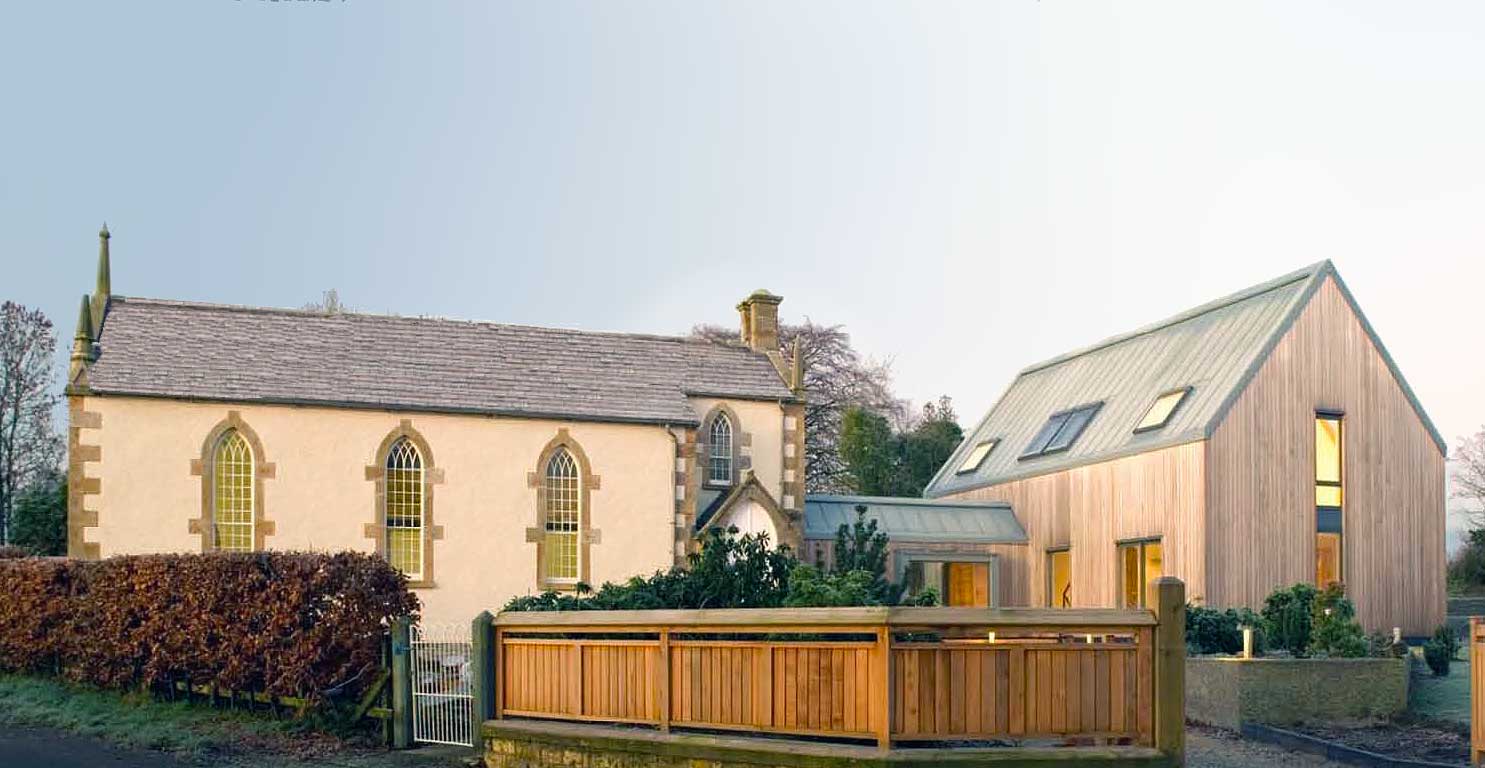Tattykeeran Church, Fermanagh
Disused church renovation and extension.. Provided design, statutory authority applications and construction information. Project was published in “Perpsective “Feb 2009, “Home Building and Renovation” May 2010, “Sunday Times” Aug 2010, and BBC “House of the Year” Jan 2011.
- Tattykeeran Church
- Conversion to 2 storey dwelling
- Tempo, Co Fermanagh
- Completed December 2008
Bought in 1996 the project was conceived as a Studio Home come bed and breakfast come retreat: a fairly open brief that was formed by piecing together elements that we thought would make it a desireable, flexible, and inspirational place to live. As it is only a little church, the physical solution was a very simple one. We used the intergrity of the church space to give us the inspirational living/studio area, and an annex to accommodate a discreet sleeping quarters. The combination was flexible and seemed to lend itself to a variety of possible uses. The remaining ingredient was how to treat the new and old buildings and make the whole thing desireable.
In architectural terms, internally preserving the quality of the church space was in no conflict at all with our new brief and the choice of using modern materials on the interior seemed an honest way to add its new layer of life and purpose. The annex required a humble but not diminished presence so that it had the integrity to sit next to the church but in a polite way. What better way for this country old countryside meeting place for farm labourers and blacksmiths than by using the image of an elegant modern barn.
For this small church, the conversion to a domestic function seemed natural and uncontentious. The scale of the original church building was domestic and the decoration modest. The new function also modest and singular in purpose in that it is for a new family or people to live together in “under one roof”. Tattykeeran Church may have become simply 44 Tattykeeran Road but it is still there for those who were baptised or married in it to see and we hope it has been presented in such a way that the sensibilities of those people and the significance of those community and life events are not slighted but preserved. Certainly the comments and words from many interested visitors and parishoners to the project during construction (among them the Sunday school teacher, the sextons son) would indicate that it has been a success in this respect. A further gesture and nod of approval has come from vestry committee of the surviving Colebrooke Estate church who have reintrusted us with the original bell (it is suitably minus the clapper) made in Murphys Foundry in Dublin.





